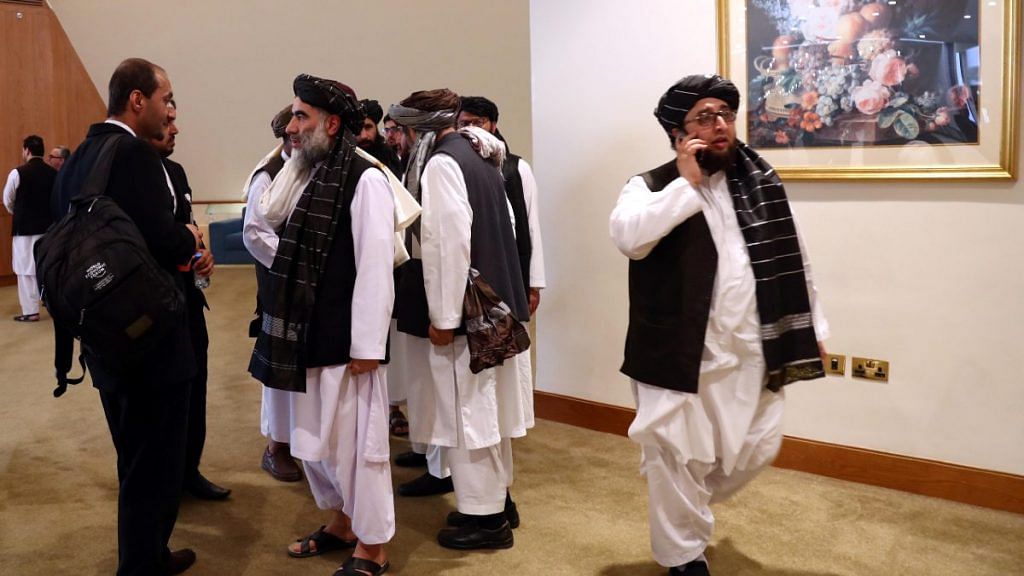New Delhi: The Taliban, which took over Aghanistan’s capital Kabul Sunday, may not be able to access a majority of the country’s central bank’s assets.
In a series of tweets posted Wednesday, Ajmal Ahmady, Governor of the country’s central bank Da Afghanistan Bank (DAB), explained why the country’s shipments of US dollars are in doubt and how it could affect the economy.
This thread is to clarify the location of DAB (Central Bank of Afghanistan) international reserves
I am writing this because I have been told Taliban are asking DAB staff about location of assets
If this is true – it is clear they urgently need to add an economist on their team
— Ajmal Ahmady (@aahmady) August 18, 2021
Ahmady, who fled Afghanistan Monday, said most of the country’s central bank assets were parked in the United States. Of the $9 billion reserves, $7 billion are with the US Federal Reserve, he tweeted.
The major investment categories include the following assets (all figures in billions)
(1) Federal Reserve = $7.0
– U.S. bills/bonds: $3.1
– WB RAMP assets: $2.4
– Gold: $1.2
– Cash accounts: $0.3(2) International accounts = 1.3
(3) BIS = $0.7
— Ajmal Ahmady (@aahmady) August 18, 2021
Currently, the Taliban is on the UNSC sanctions list. On Wednesday, the US Federal Reserve blocked the Taliban’s access to DAB’s assets — blocking more than 70 per cent of the country’s reserves.
US Treasury bills ($3.1 billion), World Bank Reserve Advisory & Management Partnership ($2.4 billion), gold ($1.2 billion), cash accounts ($0.3 billion), international accounts ($1.3 billion) and Bank of International Settlements ($0.7 billion) form Afghanistan’s major investment categories, Ahmady tweeted.
Apart from the assets parked in international institutions, Afghanistan’s dollar supply will also face a crunch, he said.
“Given Afghanistan’s large current account deficit, DAB was reliant on obtaining physical shipments of cash every few weeks. The amount of such cash remaining is close to zero due (to) a stoppage of shipments as the security situation deteriorated, especially during the last few days.”
Also read: US’ failure to push back Pakistan has brought Taliban to Kabul. India had seen it coming
Shipments of US dollars
Ahmady said he was informed Friday that there will be no further US dollars shipments to the country.
He further said that as a result, he, for the first time, had to limit USD access to both banks and dollar auctions to conserve remaining DAB dollars. A withdrawal limit was also imposed on customers, leading to the depreciation of the Afghan currency.
For the first time, I therefore had to limit USD access to both banks and dollar auctions to conserve remaining DAB dollars.
We also put out a circular placing maximum withdrawal limits per customer
During the day, afghani depreciated from 81 to almost 100 and then back to 86
— Ajmal Ahmady (@aahmady) August 18, 2021
The DAB governor also claimed that former President Ashraf Ghani was informed about the dollar crisis, who then requested US Secretary of State Antony Blinken to resume the shipment, which was approved ‘in principle’ but never arrived.
“Seems like our partners had good intelligence as to what was going to happen,” he said.
Again, seems ridiculous in retrospect, but did not expect Kabul to fall by Sunday evening.
In any case, the next shipment never arrived. Seems like our partners had good intelligence as to what was going to happen.
— Ajmal Ahmady (@aahmady) August 18, 2021
IMF blocks access to SDR reserves
Ahmady also explained that the International Monetary Fund had approved Special Drawing Rights (SDR) of $650 billion recently, of which the DAB was supposed to receive around $340 million by 23 August.
SDR is an interest-bearing international reserve asset created by the IMF to supplement other reserve assets of member countries.
On Thursday, the IMF said it suspended Afghanistan’s access to IMF resources due to the lack of clarity over the country’s government.
Ahmady also said that the financial crisis will not be caused by the decisions of the country’s central bank but the ones taken by the international institutions, which will put pressure on the existing dollar supply of the country. The Taliban will be forced to impose limits on dollar transactions that will trigger inflation, bring misery to its people, he said.
(Edited by Neha Mahajan)
Also read: Did India rely too much on US? Taliban siege of Kabul is affecting our regional power status
